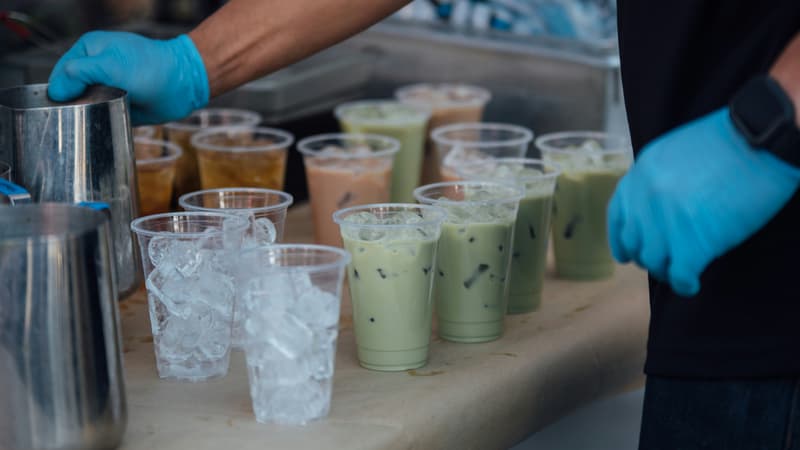Sweet, colourful and eye-catching: Available in a variety of flavours, bubble tea is a particularly popular drink among young people in China, but they are still looking twice at prices in the context of an economic slowdown. The unemployment rate among 16- to 24-year-olds in the country jumped to 17.1% in July, its highest level since the beginning of the year, according to official figures.
The situation in the world’s second largest economy is generally penalising household consumption, which is giving up certain purchases and turning mainly to low-priced products. This trend does not exclude tea drinks, despite their immense popularity, at the risk of weakening an ultra-competitive sector that last year was worth more than 21 billion dollars (just under 19 million euros).
These milk or fruit drinks are usually made on site and are topped with sugar, gelatin, cream or even juice, and topped with tapioca pearls (the base of the famous “pearl tea” or “bubble tea”). They are served to go in large plastic cups with straws.
Brands and outlets have multiplied in record time in major cities and shopping centres. “The market is saturated” in China, says Stacy Chen, a new generation tea expert, followed by some 180,000 subscribers on Chinese social networks. In her videos, the young woman periodically presents herself in front of a selection of drinks, before tasting them, comparing them and commenting on them for her Internet users.
Tough competition
“There are so many brands and new products on the market (…) that we can’t film them all,” smiles the young woman we met in Hangzhou, a metropolis near Shanghai. With consumers now less willing to spend, “lowering prices” is the only way for brands to survive, says Chen.
The bubble tea sector, which has around 500,000 outlets and countless brands, some of which are listed on the stock exchange, has experienced a meteoric rise in recent years.
Founded in 1997 by two brothers and originally a simple ice cream brand, Mixue Bingcheng is one of the most aggressive in terms of pricing. Mixue was “the first to invest in the niche of cheap milk teas,” says Evelyne Chang of marketing firm China Skinny.
This choice is paying off given the economic situation. Its mascot, a smiling snowman with an ice cream cone in his hand, is omnipresent in China.
Luxury at low prices
“Other teas are too expensive,” says Guo Jun, 21, who lives in Beijing. The young woman has just taken advantage of a discount to treat herself to iced lemonade at the ridiculous price of 2.8 yuan (35 euro cents).
“Many cafes and restaurants are adapting (accordingly) and lowering their prices,” says Evelyne Chang of the specialist company China Skinny. The American Starbucks, long considered by the Chinese to be a trendy place with high-end products, is now in trouble thanks to a multitude of local chains with reduced prices (Luckin Coffee, Manner Coffee, M Stand, etc.).
In China, “we all used to think of coffee as an imported, luxury product,” recalls Chinese influencer Stacy Chen, who became known for her bubble tea-related content. “Today I can buy this same luxury product for 9.9 yuan,” or around 1.25 euros, Ms. Chen smiles. So “why should I spend more than 20 yuan on milk tea?” she pretends to ask herself.
Source: BFM TV


